
I paid a visit to the Land of Ne (Koyene) from which hailed Takahito. He is known as the founding father Izanagi through the 8th century classic, the Kojiki. I was searching for his sister, Shirayama-hime, the lady of the White Mountain. Takahito and Shirayama are both mentioned prominently in the Hotsuma Tsutae, an even more ancient document.
The White Mountain, Shirayama, is today called Hakusan. I visited it from Ishikawa-ken in the area on the Japan Sea coast known as Hokuriku, northwest Honshu. It straddles three other prefectures: Fukui, Gifu, and Toyama. Hakusan is a beautiful mountain range and the center of the Hakusan National Park, shown above. Around its footills, as well as at one of its peaks, there are a number of Shirayamahime jinja associated with mountain faith of Hakusan. Until the 8th century, people did not climb sacred mountains, and this is certainly a sacred mountain.
The above map of Hakusan National Park indicates the highest altitudes in dark red-brown shade. This is the Ishikawa west side of the mountains. The other side includes the place of deep snow called Shirakawa-go, part of the ancient land of Hida from Toyama, Takayama, and down to Gifu. I had traveled that route just last year.

Our group visited several of these shrines. We found the old mountain shrines most interesting. In this snowy region, they are enclosed within glass outer walls. Sliding doors glide open to allow prayer access to the devotee.
Seoritsuhime, the wife of ruler Amateru, is remembered in several shrines in this area. Both of these hime are regarded as kami of water and of purity. Seoritsuhime is invoked in the Shinto norito of purification and she whisks away one’s impurities into rivers that plunge ultimately into the sea.
The national park is popular with mountain climbers and skiers. As we drove up the mountain, we passed through many tunnels and saw many dams. This is a vital watershed area, the source of four great rivers, and produces not only water for drinking and agriculture but also hydroelectric power.
Shirayamahime
Shirayamahime is known also as Kokorihime in Hotsuma Tsutae. In the Nihon Shoki her name appears as Kukurihime which means one who binds. Another name is Kikurihime which means one who hears. As the latter, she is regarded as an aspect of 11-Headed Kwannon who listens and responds to people’s pleas.
Shirayamahime appears in Hotsuma Tsutae in Ayas 1, 4, and 24. In the former, when her sister-in-law Isanami gives birth to Amateru, Shirayamahime is the one who gives him his first bath. She is Amateru’s aunt. Shirayamahime is the first to hear the infant speak his name, Uhirugi, spirit of the sun. For this she was called Kikurihime, although at other times Kokorihime.
Aya 24 tells about Ninikine’s travels, by palanquin provided by Ukesuteme, through the Shirayama peaks in the Land of Koshi (Koyene). Together with Ukesuteme, Shirayamahime studied the secret teachings of To no Woshite with Lord Toyoke in his palace in Hitakami. Ukesuteme is the original name of the immortal Mother of the West, Xi Wangmu to the Chinese. This leads me to suspect that Shirayamahime and Ukesuteme may have been masters of The Way and possibly acquired supernatural abilities.
While Shirayama is the name of the hime, Hakusan has become the name of the mountain and the mountain faith. Interestingly, the hongu main shrine in Kanazawa City is called Shirayamahime Jinja while the okunomiya mountain-top shrine is Hakusan Jinja.
Matsuo Basho in the Land of Ne
White Winds of Autumn. Matsuo Basho preceded me here on his famous trip chronicled in Oku no Hosomichi. He was at the famous Natadera Temple in 1689.
ishiyama no ishi yori shiroi aki no kaze
whiter than the stones of Stone Mountain are the winds of autumn.

Grasshopper in the Helmet. When I visited Tada Jinja in Komatsu, I learned that Basho had also been here and is memorialized at his own shrine within the Tada shrine grounds. Tada Jinja possesses the elegant helmet of Saito Sanemori, a famous warrior of old. Basho, as he did in his natsugusa ya haiku, expresses his sadness at lives lost in battles.
muzan ya na kabuto no shita ni kirigirisu
grasshopper under the helmet how tragic!


Shrines in the Land of Ne
It’s been said that there are 3,000 shrines affiliated with Shirayamahime, Hakusan, and Kukurihime. Of course, many of them are in the land of Ne. We visited a number of them and you can read about them at our sister site: www.yamanomiya.wordpress.com.
Life in the Land of Ne
What have I learned from this trip? Something about the preciousness of human life and the courage of those living in harsh yet beautiful environments. I could see that people nevertheless deeply appreciate the gifts of nature such as the mountains which are home of kami and the source of pure water of life.
Updated 2017.01.17
*





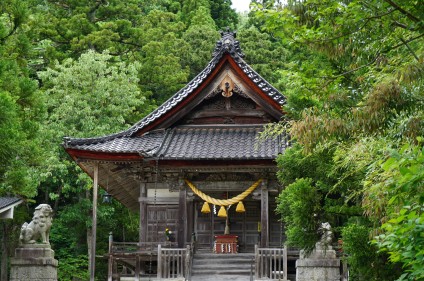



















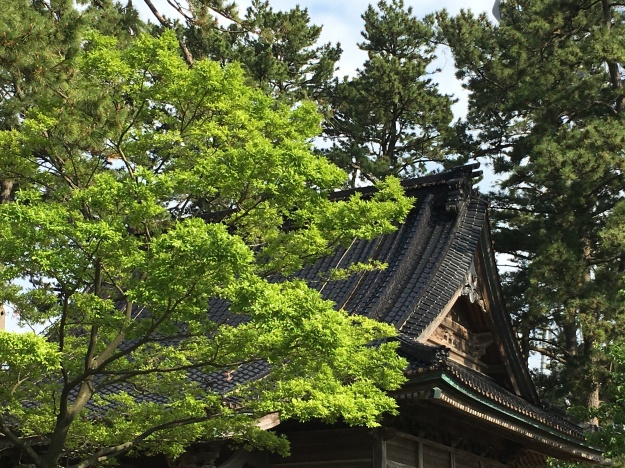

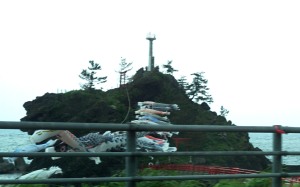







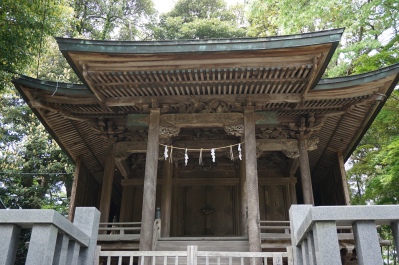



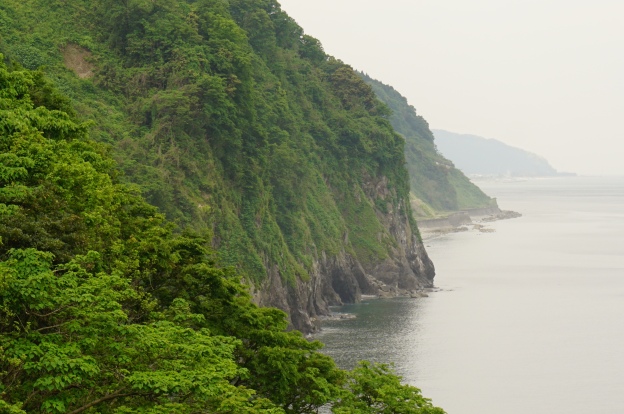



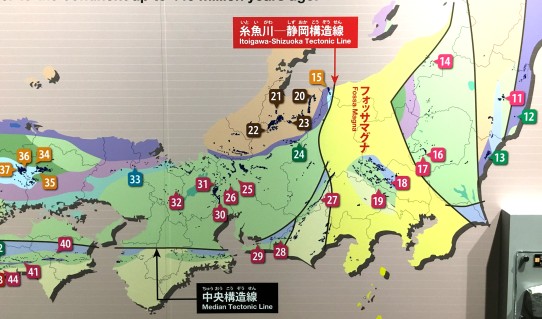

 In Koshi-no-kuni, also known as Esshū province, now known as Hokuriku, a folk heroine of Itoigawa is Nunakawahime. Legend says she was beautiful and wise, and she knew how to make magic using jade. Her fame was so great that the famous Ōkuninushi came from Izumo in the west to win her hand. And he did. Their son became Takeminakata, the kami revered at Suwa Taisha in nearby Nagano. This statue of Nunakawahime holding a large jade stands on the north side of the Itoigawa station.
In Koshi-no-kuni, also known as Esshū province, now known as Hokuriku, a folk heroine of Itoigawa is Nunakawahime. Legend says she was beautiful and wise, and she knew how to make magic using jade. Her fame was so great that the famous Ōkuninushi came from Izumo in the west to win her hand. And he did. Their son became Takeminakata, the kami revered at Suwa Taisha in nearby Nagano. This statue of Nunakawahime holding a large jade stands on the north side of the Itoigawa station.



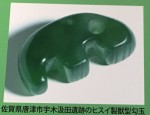 Magatama means curved bead. They were generally comma-shaped, hence their name; they were also in the shapes of animals and insects.
Magatama means curved bead. They were generally comma-shaped, hence their name; they were also in the shapes of animals and insects.





You must be logged in to post a comment.